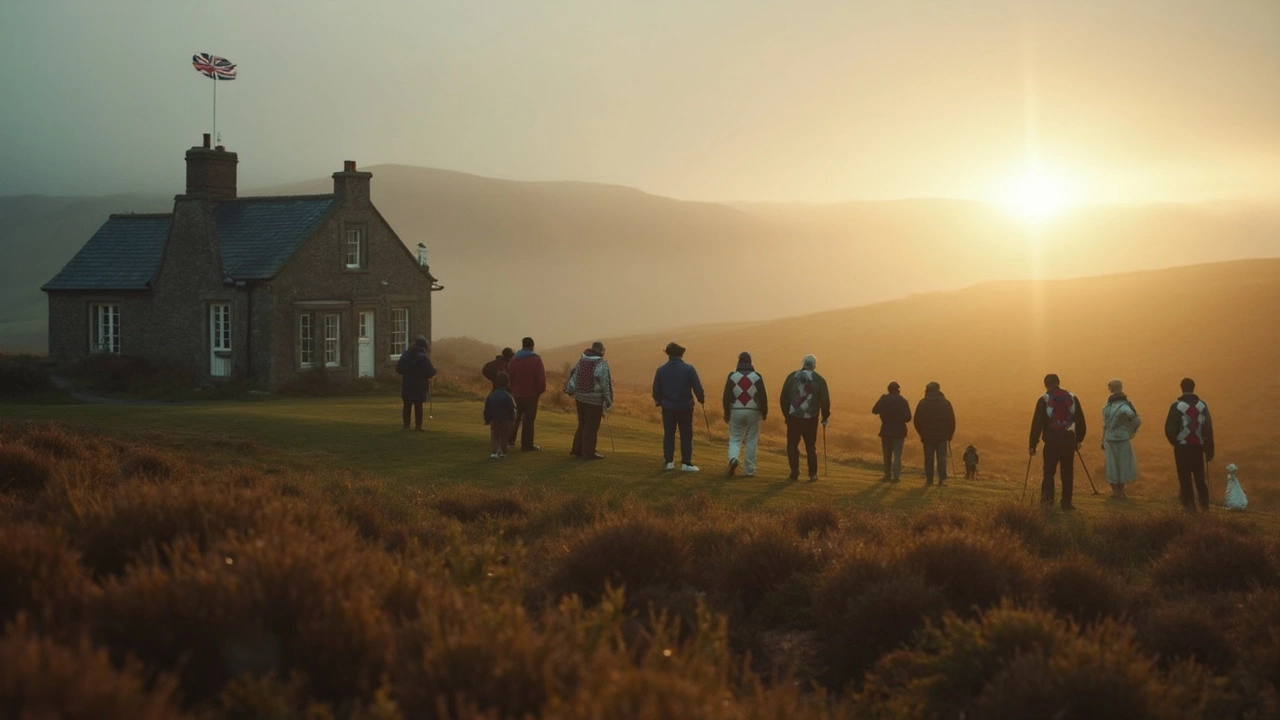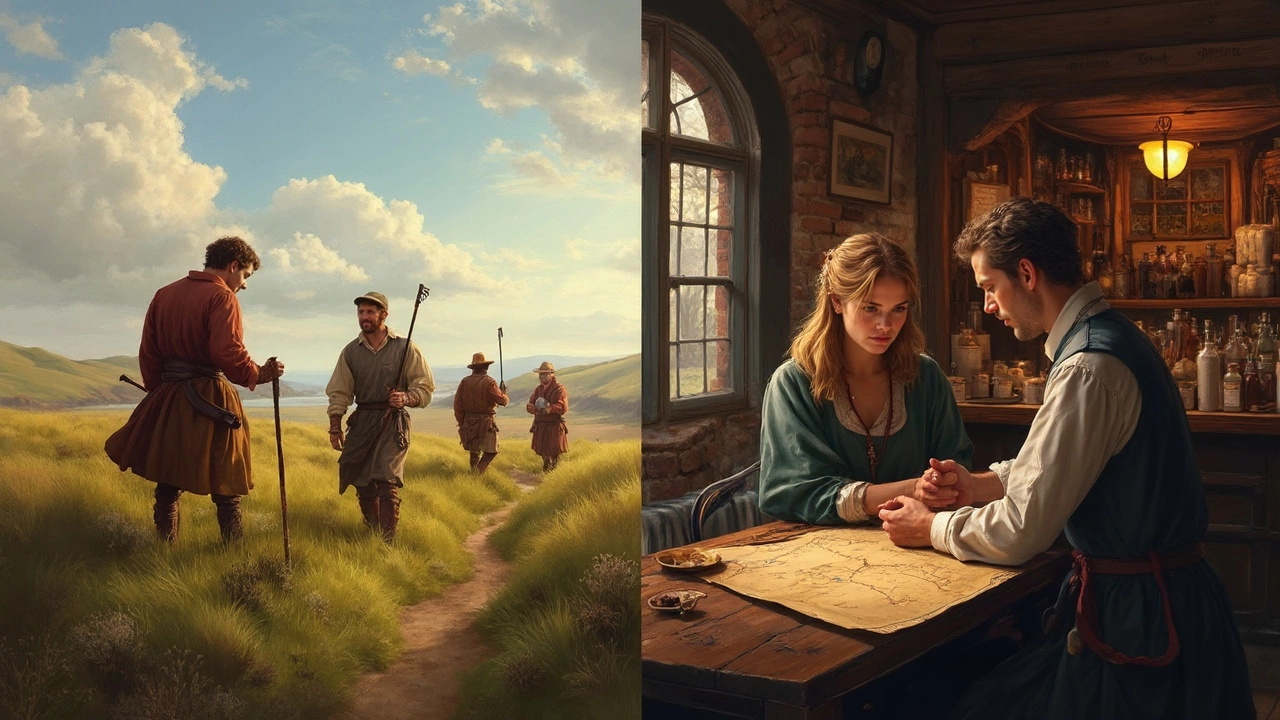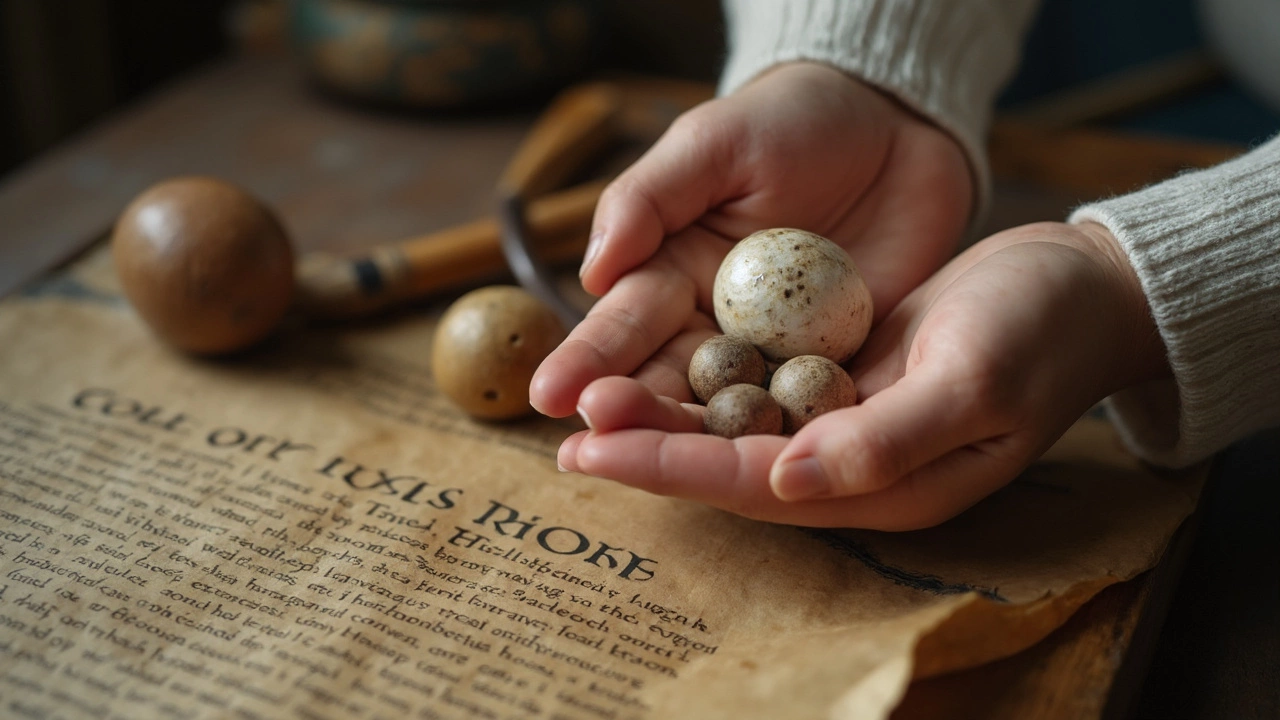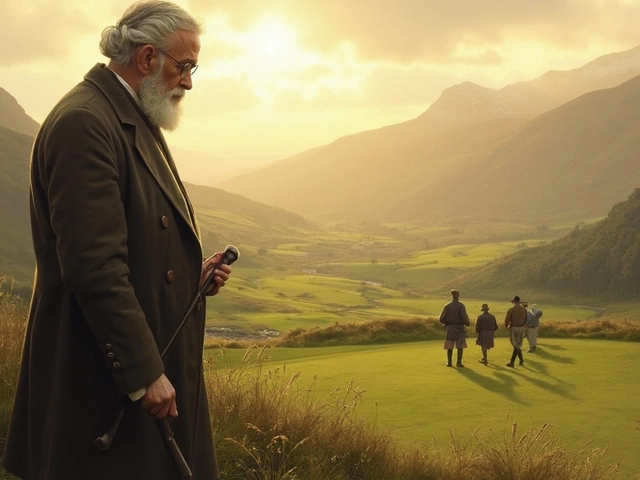What Country Invented Golf? The Real Story Behind the Game

Ask anyone which country invented golf, and most people shoot back with “Scotland.” Easy answer, right? But there’s a twist—people have been whacking balls with sticks for centuries, way before golf officially showed up. So why does Scotland get all the credit? It comes down to more than just swinging a club on a field. Golf as we know it—rules, courses, the whole deal—really got going on the windswept links of Scotland.
If you’re hoping to find the roots of golf, don’t get fooled by random claims about ancient games from China or the Netherlands. Sure, those places had something like golf, but it didn’t look or feel like today’s game. The Scots didn’t just invent a way to hit balls—they shaped the entire vibe of golf, from the first 18-hole courses to that stubborn obsession with the rules.
- The True Birthplace of Golf
- Golf’s Evolution: From Ancient Pastimes to Modern Game
- How Scotland Perfected the Course
- What Makes a Course ‘Authentic’?
- Tips for Experiencing Golf’s History Yourself
The True Birthplace of Golf
When you start digging into the real story of golf, you can find ball-and-stick games in loads of old cultures. The ancient Romans smacked balls around fields, and the Dutch had a game called "kolf" as far back as the 1200s. But if you want to know which country actually invented what we call golf today, there’s no debate: it’s Scotland.
The earliest records of golf come from Scotland in the 15th century. King James II even banned the game in 1457—he thought Scots were playing too much golf and not practicing archery for wars. That might sound pretty harsh, but it only shows how popular and addictive the game was becoming.
By 1502, the Scottish ban disappeared, and King James IV became the first royal golfer. Fast forward to 1744, and The Honourable Company of Edinburgh Golfers wrote the first official rules—but only for 13 holes back then. Scotland also gave us the world’s oldest golf course: St Andrews, where people have been playing since at least 1552. If you play there, you’re literally walking on a piece of golf history.
Take a look at this snapshot of how the game started taking shape in Scotland:
| Year | Golf Milestone |
|---|---|
| 1457 | Golf banned by King James II |
| 1502 | Ban lifted, King James IV buys first set of clubs |
| 1552 | Golf allowed at St Andrews |
| 1744 | First official rules written (13 holes) |
So, while people have played similar games, only Scotland pulled it all together and started building real golf courses. Everything that makes up the modern game—pars, greens, and even those nasty bunkers—began right there. That’s why the world still sees Scotland as golf’s hometown.
Golf’s Evolution: From Ancient Pastimes to Modern Game
Golf didn’t just pop up one day. Ancient folks in China swatted balls with sticks way back in the Song Dynasty, around the 10th century. The Dutch had a game called "kolf" in the Middle Ages—they played it on ice, smacking balls toward a target. But those games didn’t have the courses, clubs, or rules that define golf today.
The real turning point was Scotland in the 1400s. Scottish records from 1457 show that Parliament tried to ban golf because soldiers were skipping archery practice for the game. That’s proof it had already gotten popular. The first rules for golf showed up in 1744, written by the Gentlemen Golfers of Leith, basically the world’s first golf club. Eighteen holes became the standard, thanks to St Andrews cutting its course down from 22 to 18 in 1764.
All these changes weren’t just for tradition—they made golf more fun and fair, paving the way for tournaments and clubs to spread worldwide. Here’s what set modern golf apart:
- First official club (Honourable Company of Edinburgh Golfers) set club rules, 1744
- First 18-hole layout at St Andrews in 1764
- Royal and Ancient Golf Club of St Andrews started in 1754, quickly running the show for all things golf
- Golf balls switched from leather and feathers to the “gutty” (gutta-percha) in the 1800s, making the game more affordable
- The Open Championship launched in 1860, marking the start of pro golf
“The game as standardized in Scotland is the game which conquered the world.” — John Low, early golf historian.
Want some numbers? This might help:
| Year | Golf Milestone |
|---|---|
| 1457 | Scottish Parliament bans golf (temporarily) |
| 1744 | First written rules by Edinburgh golfers |
| 1764 | St Andrews sets 18-hole standard |
| 1860 | First Open Championship |
Bottom line: Without Scotland turning a simple pastime into a real sport—complete with rules, clubs, and courses—we probably wouldn’t have modern golf. Next time someone brings up kolf or chuiwan, just remember there’s only one home for the real thing.

How Scotland Perfected the Course
Scotland didn’t just get credit for inventing golf—it pretty much designed the modern course. Walk onto any proper golf course today, and you’re standing in the Scot’s shadow. Back in the 15th century, the Scots started setting aside actual land for the game, calling these stretches of sandy coastline “links.” These courses have short, springy turf, heaps of natural bumps, and, yes, unpredictable winds that still mess with even pro golfers today.
One thing that truly changed the game: Scotland settled on 18 holes. Before this, courses were all over the place—12 holes, 22, you name it. The Old Course at St Andrews locked down the 18-hole format in 1764, and everyone else soon copied the idea. That’s why today, if you say “full course,” you mean 18 holes. And the Old Course itself? It’s pretty much the golfing world’s mecca, still open to anyone with a set of clubs, a tee time, and some patience.
The Scots also weren’t shy about putting hazards and quirks right into their course design. Expect deep bunkers, tight fairways, and those weird grassy humps called ‘pot bunkers.’ These elements weren’t meant to make it easy—they made it more challenging, creative, and, frankly, addictive. When you’re playing a Scottish-style course, you’re not just chasing a ball; you’re fighting the land, the weather, and every funky twist Mother Nature can throw at you.
You might notice another classic touch: the layout. Scottish courses don’t just run in a tidy circle or square. They usually start at the clubhouse, head out toward the coastline, and then wind back in, so no two holes ever feel the same. That’s a big reason why playing traditional Scottish courses like Royal Troon or Carnoustie feels so different from typical ones elsewhere.
Bottom line: Scotland’s way of doing things—natural landscapes, unpredictable weather, 18 holes, and devilish hazards—basically wrote the rulebook for every golf course built since. If you’re a fan of the golf history, stepping onto a Scottish course is like walking onto sacred ground.
What Makes a Course ‘Authentic’?
If you want to talk about real golf, you have to talk about authentic courses—and no, not every place with fairways and greens qualifies. Authentic courses stick close to the roots of the game, both in how they're designed and in the kind of experience they deliver. So, what separates the real deal from modern copycats?
First off, an authentic course usually sits on natural land, without tons of earth moved around just to shape holes. Think about the old Scottish links—places like St Andrews or Royal Dornoch—where the course just flows with bumps, sand, and grass laid down by nature. Those natural twists and turns weren't designed by computer; they're just part of the land.
- Traditional links courses are found along coastlines, using sand dunes, native grass, and wind as natural hazards. If you see a course hugging the sea with fast, firm turf, there's a good shot it's got that classic style.
- The layout matters too. The oldest courses almost always have quirky holes, blind shots, double greens, and maybe even sheep wandering around. It sounds odd, but these details are authentic because that's how people played on those grounds hundreds of years ago.
- Authentic courses keep the technology upgrades in check—no cart paths everywhere or massive irrigation systems. Walk out there, and you experience golf the way it was before fancy gadgets took over.
Another thing—golf history plays a big role. If a course has hosted famous tournaments or has been in use for centuries, it’s not just about the land, it's about tradition. Look at places like Musselburgh Links, which has records of play from the 1600s, or the Old Course at St Andrews, which some tourists just walk to soak up the vibe.
If you ever get a chance to play an authentic course, treat it with respect. Leave the massive divots behind, walk instead of riding a cart, and pay attention to local rules. Authenticity isn’t about being fancy—it’s about feeling what golfers did long before the game got high-tech.

Tips for Experiencing Golf’s History Yourself
If you want to get closer to golf's origin, you've got to step onto the classic Scottish links. St. Andrews, known as the 'Home of Golf,' is the obvious first stop. The Old Course there has been around since the early 1400s, and anyone can apply for a tee time through a ballot—no VIP status needed.
But there’s more than St. Andrews. Try playing a round at Musselburgh Links, which has records of golf being played as early as 1672. The course is open to the public, and you can even rent old-school hickory clubs to get a feel for what playing was really like centuries ago.
- Book a guided tour of the British Golf Museum at St. Andrews. You’ll see everything from 500-year-old clubs to the original rules.
- Check out North Berwick, one of Scotland’s oldest and quirkiest courses, with famous holes copied around the world.
- Many Scottish courses have visitor days where anyone can walk the grounds—even if you’re not playing.
- Want the most authentic experience? Try walking the course with a local caddie who knows all the old stories.
If you can’t make it to Scotland, visit courses in your country modeled after “links” style golf. Look for public courses that have kept classic designs and natural landscapes, just like the old Scottish layouts. A few U.S. spots even run hickory stick tournaments for that real vintage vibe.
No matter where you go, focus on the atmosphere. Listen for the same seaside wind, play with basic clubs, or even just walk the fairways instead of riding a cart.
| Classic Scottish Course | Year Established | Claim to Fame |
|---|---|---|
| St. Andrews Old Course | 1552 (documented) | World’s most famous golf course |
| Musselburgh Links | 1672 | Oldest continuously played course |
| North Berwick West Links | 1832 | Original ‘Redan’ hole |
Want to dig into golf history even deeper? Time your visit to a big event, like the Open Championship. Nothing feels closer to the roots of golf than standing on the same turf as the pros at a historic tournament.



